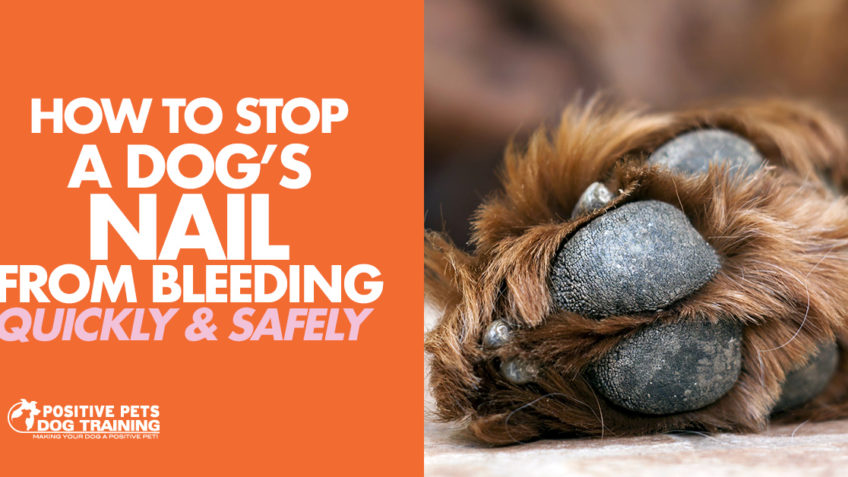How To Quickly & Safely Stop A Dog’s Nail From Bleeding

As a pet parent, it’s a good thing to be informed about your pup’s anatomy. As well as what to do if they get hurt. A common injury your pooch could face is a bleeding nail. Now, why do dog’s nails bleed, and how do you safely take care of a bleeding nail? Let’s find out!
What Causes a Dog’s Nail to Bleed
Your canine companion has claws that project directly from a small bone located on each of their “fingers.” Those bones are covered by a fleshy area that’s called a quick and then a hard nail.
The quick contains small blood vessels and nerves that provide your pooch with nutrition and sensations. So, in effect, those claws can grow and successfully grip surfaces. The outer nail surrounding all of this is made of keratin. The nail, however, can quickly start to grow too long and curve under your pup’s paw. This can cause them immense discomfort when they walk – which is why we have to clip their nails. When clipping Fido’s nails, though, it’s easy to cut too far and accidentally clip the quick – which, as mentioned before, contains blood vessels and nerves.
Sometimes your pooch’s nail might even break naturally from walking a lot on concrete or other hard surfaces. Whatever the reason – if the quick of their nail is cut, their claws will begin to bleed, and it’s essential that you know how to safely stop it.
What to Do When Your Dog’s Nail Starts Bleeding
You may need additional help while patching your dog up because the quick is very sensitive. So someone may need to hold Fido still. Also, since this is a very sensitive area, be sure you’re applying a gentle amount of pressure.
To start, you’ll need a clean cotton cloth that you’ll place and press directly on the bleeding nail. You’ll want to hold that cloth there, once again gently pressing down, for about 2 minutes. For dogs, it takes about 2-4 minutes for their blood to clot, so you might have to hold the cloth for up to 4 minutes. Be patient, and only check on the nail after the designated time is up.
What if the nail Won’t Stop Bleeding
If you’ve been compressing the affected area for a while, yet it’s continuing to bleed, you can try using powder to assist in the clotting process. Cornstarch can work, as well as potato starch.
What works best, though, is styptic powder. This powder constricts the blood vessels so that clotting and scabbing can successfully occur. Not many people have it ready on hand, so it’s a smart thing to buy as a precaution. You can find this powder online or at your local pet store.
Once you have the powder, place a small amount in the palm of your hand. Then proceed to dip your canine’s bleeding claw into the pile of powder.
What if Your Dog’s Nail is Bleeding at the Base?
Minor nail bleeding can typically be handled successfully at home, with occasional instances requiring a veterinarian’s assistance. However, if your pup somehow cuts the base of their nail, the wound will most likely start to bleed a substantial amount.
If this is the case, you’ll want to wrap the nail ina cotton cloth and apply gentle pressure, all while making arrangements for an emergency vet visit. Unlike if the quick is bleeding, you won’t want to remove the fabric after 2-4 minutes and instead leave it on until a vet is able to assess it.
After any type of incident that includes your furry friend’s claw bleeding, you’ll want to keep an extra close eye on them for the next few days to ensure it doesn’t start bleeding again. In most cases, a bleeding nail is nothing to get worked up over. But if the base of the nail is bleeding, something feels wrong, or you simply don’t feel comfortable tending to their wound – always play it safe and take your pooch to their vet.
